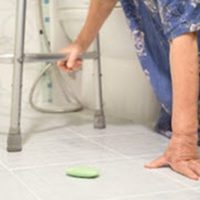Falls Inside Hospitals Are On The Rise

When someone says they were injured inside of a hospital, we immediately turn our attention to the behavior of doctors, and possible medical malpractice. But like any property, hospitals, if not properly maintained and inspected, can lead to falls as well. In fact, recent research shows that hospitals are seeing an increase in slip and fall incidents.
Falls in Hospitals are Increasing
It is estimated that about 1 million people suffer falls inside of hospitals every year, although not all lead to injury or fatalities. And while we think of the elderly and infirm as the most likely people to fall inside of a hospital, that is actually not true—studies have shown that people in their 50s are more likely to suffer falls inside of hospitals.
More Dangerous Inside a Hospital?
Hospital falls can be more deadly and dangerous than falls that happen on or in other properties, simply because the patients who fall, may be less equipped to protect themselves in a fall. They may be less mobile, less able to react to brace themselves for a fall, and the injuries from a fall, may be more likely to exacerbate whatever condition the person is in the hospital for in the first place.
Why Do People Fall in Hospitals?
Why are more people falling inside of hospitals? That is still up for debate, but there are some theories.
Of course, the major and most obvious theory is the condition of the patients themselves; they may be less stable on their feet, or simply suffering from side effects of medicines that make walking more dangerous.
Patients are walking in unfamiliar surroundings, and sometimes, in cramped hospital rooms that may be filled with wires or objects on the floor.
There also may be some level of overconfidence; some patients may just feel like they are more able bodied and more able to move about than they really are—this would explain why it is not the older population which mostly suffers falls in hospitals, but rather, those in their 50s.
Like every other business, hospitals are also suffering from a lack of staffing. Short staff means longer wait times for patients who may have needs. Those patients often resort to getting out of bed and getting what they need on their own, when wait times for nurses or staff get too long.
Boredom also plays a role—some patients, bored, may resort to just walking around the hospital on their own.
Precautionary Measures
Many hospitals now put bands or similar indicators on patients’ arms, to indicate who is and who is not a fall risk, allowing hospital staff to stop or at least assist someone who they see walking about, who should not be walking around. Like nursing homes, some hospitals are utilizing alarms on beds that sound when patients get out of bed, if the patient is a fall risk.
Call the Knoxville personal injury lawyers at Fox Farley Willis & Burnette, PLLC, today if you fell inside of, or were injured at or in, any hospital or medical facility.
Sources:
scholar.google.com/scholar_url?url=https://www.researchgate.net/profile/Tom-Weil/publication/281260460_Patient_falls_in_hospitals_An_increasing_problem/links/561f856a08aea35f267de4ba/Patient-falls-in-hospitals-An-increasing-problem&hl=en&sa=X&ei=P4QkZJ6VN5WsmgG17ZrgDg&scisig=AJ9-iYv1e70EBkxfH3UWeN56BJqY&oi=scholarr
ncbi.nlm.nih.gov/pmc/articles/PMC6446937/











